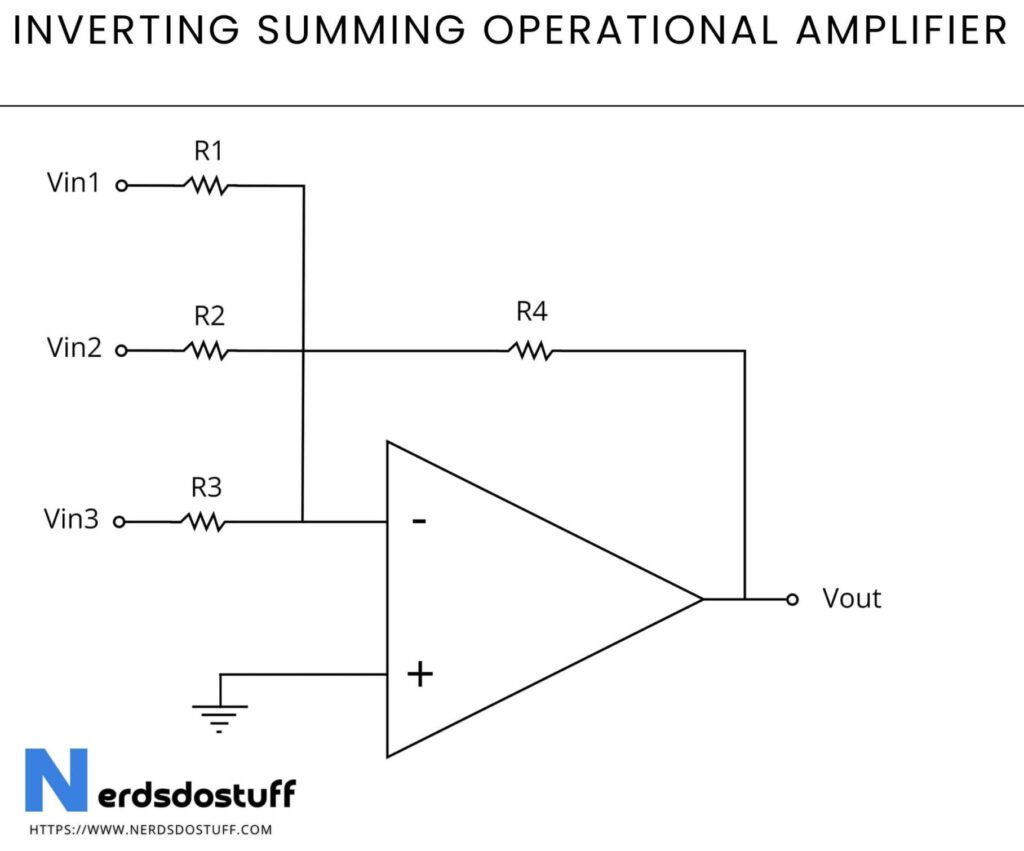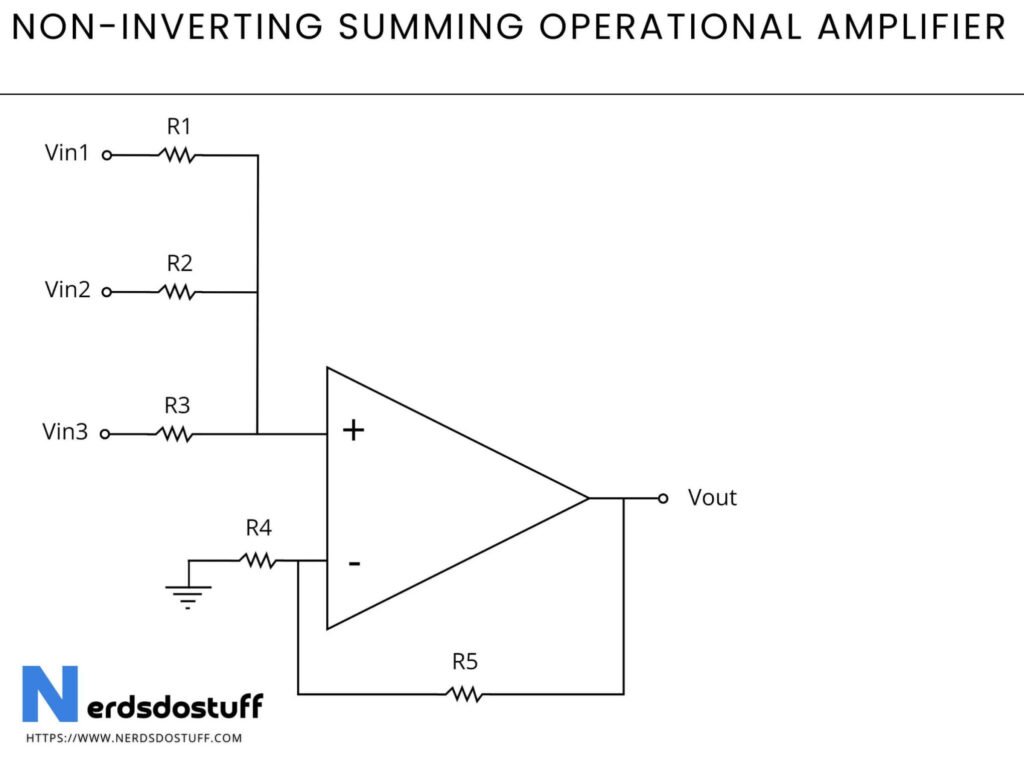What is Summing Amplifier ?
A summing amplifier is an operational amplifier (op-amp) configuration that sums multiple input voltages to produce a single output voltage. It typically consists of an inverting configuration with multiple input resistors connected to each input voltage source. The output voltage is the negative sum of the input voltages weighted by the ratio of the feedback resistor to the input resistor for each input. By adjusting the values of the input resistors, different weighting factors can be applied to each input voltage, allowing for precise control over the contribution of each signal to the output. Summing amplifiers are commonly used in audio mixers, signal processing circuits, and control systems where multiple signals need to be combined or weighted.
Inverting Summing Amplifier

Non-Inverting Summing Amplifier

Working of Summing Amplifier
A summing amplifier works by combining multiple input voltages into a single output voltage. It typically employs an operational amplifier (op-amp) configured in an inverting configuration. Each input voltage source is connected through an input resistor to the inverting input of the op-amp. The non-inverting input of the op-amp is usually grounded. The output voltage is determined by the negative sum of the input voltages, weighted by the ratio of the feedback resistor to the input resistor for each input. The negative feedback provided by the feedback resistor ensures that the op-amp maintains a virtual ground at its inverting input, allowing it to sum the input voltages accurately. By adjusting the values of the input resistors, different weighting factors can be applied to each input voltage, enabling precise control over the contribution of each signal to the output. This configuration makes summing amplifiers useful in various applications such as audio mixing, signal processing, and control systems.
Characteristics of Summing Amplifier
| Characteristic | Description |
|---|---|
| Configuration | Typically configured as an inverting amplifier using an operational amplifier (op-amp). |
| Input Voltage | Accepts multiple input voltages, which are summed together to produce a single output voltage. |
| Input Resistance | Each input voltage source is connected through an input resistor to the inverting input of the op-amp. |
| Output Voltage | Output voltage is the negative sum of the input voltages, weighted by the resistor ratios. |
| Feedback Resistor | A feedback resistor connected between the output and the inverting input stabilizes the amplifier and determines the overall gain. |
| Weighting Factors | By adjusting the values of the input resistors, different weighting factors can be applied to each input voltage, allowing precise control over the contribution of each signal to the output. |
| Application | Commonly used in audio mixing consoles, signal processing circuits, and control systems where multiple signals need to be combined or weighted. |
Applications of Summing Amplifier
- Audio Mixing Consoles: Summing amplifiers are widely used in audio mixing consoles to combine multiple audio signals from microphones, instruments, or other sources into a single output signal. Each input channel is typically connected to a summing amplifier with adjustable gain, allowing the engineer to control the volume and balance of each input in the final mix.
- Signal Processing: Summing amplifiers are used in signal processing circuits where multiple signals need to be combined or weighted. For example, in analog computing applications, summing amplifiers are used to add or subtract voltages representing different variables in a mathematical equation.
- Control Systems: In control systems, summing amplifiers are used to combine multiple control signals or feedback signals to generate a single control signal for the system. This is particularly common in feedback control systems where the output of the system needs to be adjusted based on multiple input variables or sensors.
- Instrumentation: Summing amplifiers are used in instrumentation applications where multiple sensor signals need to be combined or averaged. For example, in temperature monitoring systems, summing amplifiers can be used to combine the outputs of multiple temperature sensors placed at different locations.
- Voltage References: Summing amplifiers can be used to create precision voltage references by combining multiple voltage sources with known values. This is often used in calibration or measurement applications where a stable and accurate reference voltage is required.




